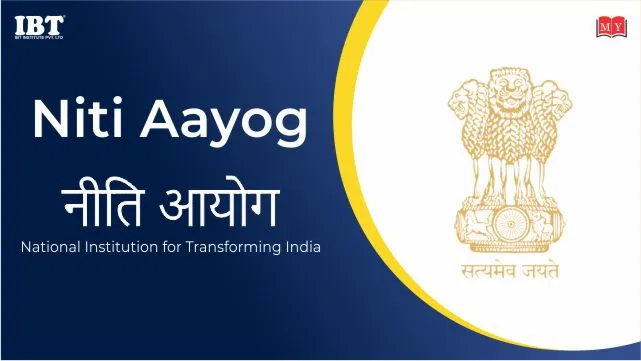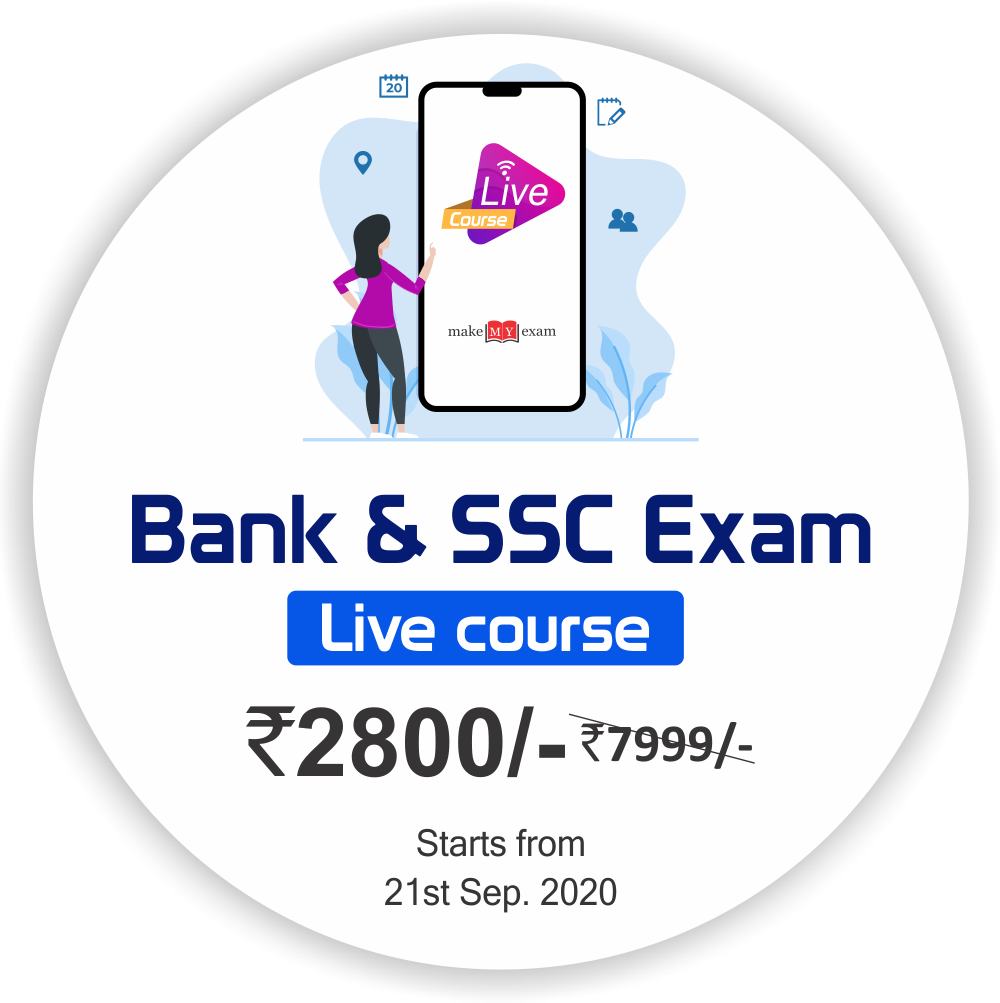
NITI Aayog
NITI Aayog was established on 1st Jan 2015. The headquarters of NITI Aayog is in New Delhi and was established by the Indian government. Before NITI Aayog, there was a Planning Commission formed on 15 March 1950.
Planning Commission:
The planning commission of India was established in 1950 by the government of India. This commission had two major functions: first, to formulate five-year plans, and second, to distribute money to states and ministries. The first 5-year plan was formulated for 1951-56, and the final five-year plan was formulated for 2012-17. When the Narendra Modi government came into power, it abolished the Planning Commission, replacing it with NITI Aayog.
In the planning commission, Prime Minister is always active as the chairman of the planning commission executing and passing all the five-year plans to run under their supervision. The deputy chairman officer from a specific government department is appointed on a requirement basis. The Finance Minister is also an integral part of the planning commission and supervises as the ex-socio member of the commission and manages the allotment of finances for specific five-year plans. Other ministers are also part of the planning commission of India and work in the required segment of the planning commission.
India has had, so far, a total of 12 five-year plans. They were all given by the Planning Commission, and then the Planning Commission was discontinued and replaced with NITI Aayog. The difference between the Planning Commission and the NITI Aayog is that there are no five-year plans and no allocation of funds to states and ministries by NITI Aayog. So, NITI Aayog performs its functions in quite a different manner from the Planning Commission.
NITI Aayog is short for the National Institution for Transforming India. NITI Aayog is often referred to as a think tank. It advises the government on different issues. There are many issues that the country faces in the defense sector, in health education, in recrafting our education policy. The Planning Commission follows a top-down approach, whereas NITI Aayog follows a bottom-down approach.
Objectives Of NITI Aayog:
The objectives of the NITI Aayog are as follows:
Shared vision: The implementation of strategies needs the participation of both central and state governments for the national development of sectors. Through this, they can create a shared vision for the development of communities.
Cooperative federalism: Cooperative federalism is a state government, central government, and local government that stands shoulder to shoulder to achieve a common aim. NITI Aayog has a multidirectional flow of policies that is from central to state, state to central, and between ministries, etc.
Credible Planning: In NITI Aayog, they do credible planning for the development of villages where the nation’s heart lies.
Weaker sections: These focus on areas that are specially referred to as national security areas. So, it also pays special attention to vulnerable sections of our society, i.e., women, children, etc.
Strategies and long-term policies: It makes strategies and policies for more than five years because it makes plans to achieve the objective, which can be achieved through a long-term process.
Innovation: NITI Aayog gives more importance to the innovation sector for creating knowledge. It gives entrepreneurial support by collaborating with communities of national and international experts and other partners.
Offer platforms: It offers a platform for the determination of inter-sectoral and inter-departmental issues for the implementation of the planned objective.
Technology up-gradation: It focuses on technology upgrading and capacity building to smoothly implement the planned programs.
7 pillars of effective governance envisaged by NITI Aayog
The NITI Aayog is based on the 7 pillars of effective Governance. They are:
- Pro-people: it fulfills the aspirations of society as well as individuals
- Pro-activity: in anticipation of and response to citizen needs
- Participation: involvement of the citizenry
- Empowering: Empowering, especially women in all aspects
- Inclusion of all: inclusion of all people irrespective of caste, creed, and gender
- Equality: Providing equal opportunity to all, especially for youth
- Transparency: Making the government visible and responsive
NITI Aayog Composition
The NITI Aayog will comprise the following:
- The Prime Minister of India is the Chairperson
- Governing Council consists of the Chief Ministers of all the States and Lt. Governors of Union Territories in India.
- Regional Councils will be created to address particular issues and possibilities affecting more than one state. These will be formed for a fixed term. It will be summoned by the Prime Minister. It will consist of the Chief Ministers of States and Lt. Governors of Union Territories. These will be chaired by the Chairperson of the NITI Aayog or his nominee.
- Special invitees: Eminent experts, specialists with relevant domain knowledge, which will be nominated by the Prime Minister.
- The full-time organizational framework will include, in addition to the Prime Minister as the Chairperson:
- Vice-Chairperson: Suman Bery (appointed by the Prime Minister) :
- Members: V. K. Saraswat (former DRDO Chief), Ramesh Chand (Agriculture Expert) and Dr. V. K. Paul (Public Health expert),Arvind Virmani (Full-time, Part-time members: Maximum of 2 members from foremost universities, leading research organizations, and other innovative organizations in an ex-officio capacity. Part-time members will be on a rotational basis).
- Ex Officio members: Amit Shah, Rajnath Singh, Nirmala Sitaraman and Narendra Singh Tomar (Maximum of 4 members of the Council of Ministers which is to be nominated by the Prime Minister.)
- Chief Executive Officer: B.V.R. Subrahmanyam ( CEO will be appointed by the Prime Minister for a fixed tenure. He will be in the rank of Secretary to the Government of India)
Achievement of NITI Aayog:
Compared to the Planning Commission, which was 64 years old when it was replaced by NITI Aayog, the NITI Aayog has made many achievements within fewer years. Some of their achievements are listed below:
- On innovation and entrepreneurship: NITI Aayog gives more of its focus on innovation. Only entrepreneurs are the real innovators in the market. So, they give more of their support to entrepreneurial services by collaborating with national and international experts
- On cooperative federalism: It collaborates with the states as teamwork to work towards the national development agenda. It acts as a quintessential platform for the government of India
- On agricultural development: The first decision taken in the first meeting of the governing council of NITI Aayog held on 8 February 2015 was a task force on agricultural development. Food is the very first necessity of every person. So, the primary focus of NITI Aayog was on agricultural development
- Digitalization movement: Technology is changing day by day. To cope with the changing technology, it needs to adapt to changes with the changing technologies. It is called a digitalized movement in the faculty of rising digital India
- Increase in FDI: The creation of jobs and an increase in productive capacity, which can be directly measured in aggregate supply, is called an increase in FDI. NITI Aayog is also investing in foreign goods to increase its share in foreign currency, which increases the liquid capacity of the Indian currency
Conclusion
NITI Aayog facilitates and empowers the critical requirements of good governance. It contains seven pillars that show that it takes into consideration the aspirations of society and individuals both. It gives a chance to every citizen to participate and collaborate with each process of NITI Aayog. Its work is transparent, which shows that the government is more visible and responsive. It provides critical directions and strategic input to the development process. It gives more focus on delivery, outcome, and accountability.
 4.5/5
4.5/5








